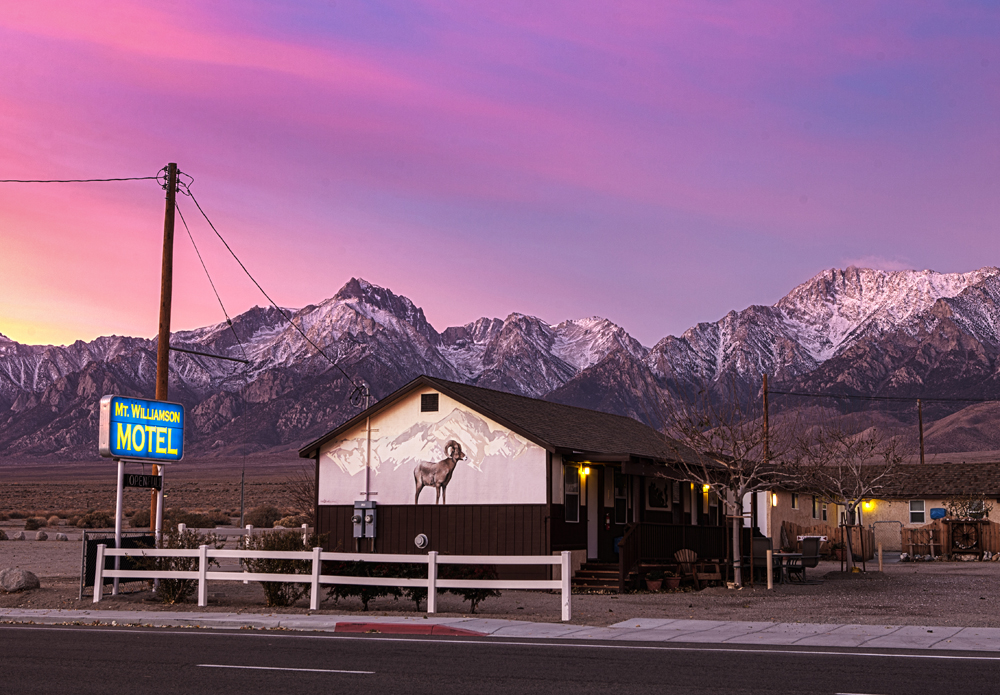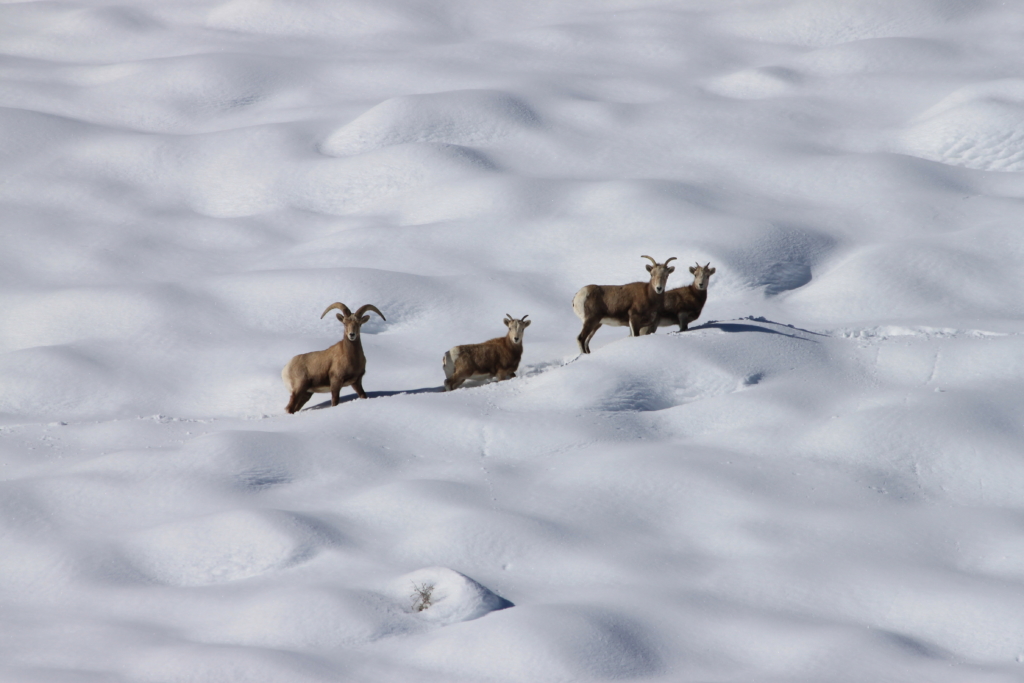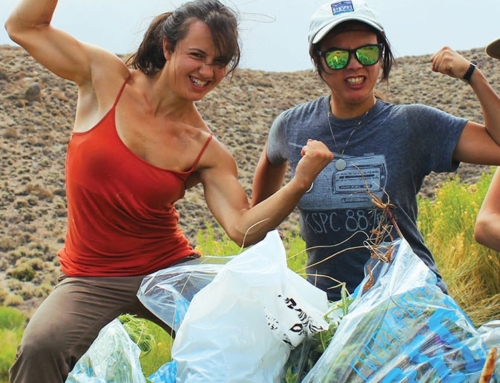
© Steve Yeager
“When we try to pick out anything by itself, we find it hitched to everything else in the Universe.”
-John Muir
As fall settles in the Eastern Sierra, we humans are making the change from hiking at high elevations and jumping in alpine lakes, to bundling up in sweaters and jackets and enjoying fall colors. Meanwhile, other animals are also responding to the seasonal change in temperature and daylight. Sierra Nevada bighorn sheep (Ovis canadensis sierrae) migrate at this time of year driven by the pursuit of forage. These sheep are creatures of habit when it comes to habitat, and they use the same migration year after year.
When you picture a migration, what comes to mind for you? If you’re thinking about traveling south to southern California for the winter, that kind of travel down a long corridor isn’t exactly what the sheep are up to. These intrepid sheep migrate vertically, up and down, on their mountain homes, changing elevation with the seasons.
© Steve Yeager
“Whether quietly feeding, or scaling the wild cliffs, their noble forms and the power and beauty of their movements never fail to strike the beholder with lively admiration.”
-John Muir, The Mountains of California Chapter 14: Wild Sheep
Throughout the year, the sheep vary their diet based on the availability of different plants. They prefer to eat nutrient-dense new growth. So in spring and summer, they eat the flowers of plants such as sky pilot and buckwheat, and they try to eat enough of it that they can store extra energy. Then, as the weather shifts and plants at high elevation no longer put out new growth, the sheep shift as well, to pursue leafy growth at lower elevation. As they relocate, they aim to find a southern facing slope so that they can gain the most warmth from the low winter sun.
Some sheep, like that friend you have who insists they’re comfortable wearing a t-shirt and sandals all winter long, buck this seasonal trend entirely. Instead of making a migration down to lower elevation, where they would be more vulnerable to predators, they remain high up in the mountains year round. The trade-off is that this exposes them to environmental risks such as avalanches, and makes finding food more of a challenge, as the vegetation is sparse at best. They survive by digging for roots in frozen ground where the snow has blown off.
© Steve Yeager
“They never make haste, however, and seem to have no dread of storms, many of the strongest only going down leisurely to bare, wind-swept ridges, to feed on bushes and dry bunch-grass, and then returning up into the snow.”
-John Muir
Unfortunately, due to a set of factors including habitat disruption and disease introduction, the Sierra Nevada bighorn sheep has faced a serious population decline and has been listed as endangered. California Department of Fish and Wildlife spearheads the effort to save the subspecies, and populations have increased since the listing. And there is still more to be done. ESLT supports this conservation effort by maintaining easements on land that has been identified as important buffer habitat. Buffer habitat isn’t habitat where the animals live, but the land surrounding. Protecting these areas further enhances the health of their primary habitat.
There are so many interesting things you can learn about this fascinating creature:
- To learn more general information about Sierra Nevada bighorn sheep, about the endangered species listing, and about current populations visit the Department of Fish and Wildlife’s website at: www.dfg.ca.gov/snbs/SheepFacts.html.
- For the scientifically-minded who are interested in information about defining herds, DNA studies, and the taxonomy of the species and subspecies, look into the work of Dr. John Wehausen.
- To see excellent pictures of the Sierra Nevada bighorn sheep as well as other members of the species, check out the wildlife photography of Steve Yeager, featured on this blog.
- Finally, you may have seen murals of Sierra Nevada bighorn sheep along Highway 395. Ink Dwell studio has created their Migrating Murals throughout the Eastern Sierra, from Lone Pine to Lee Vining. If you are interested in learning more, visit Inkdwell.com.

Jane Kim is the founder of Ink Dwell. Ink Dwell’s Migrating Mural project is a series of murals painted along migration corridors shared by people and endangered animals. Photo by Ink Dwell.

The first Migrating Mural showcases Sierra Nevada bighorn sheep along California’s Highway 395, which runs in the shadow of Sierra bighorn’s home range. Learn more at sierrabighorn.org/migrating-mural. Photo by Ink Dwell.

Author Andrew Ehlert is the Land Stewardship Associate here at ESLT. If you have questions or want to get in touch with him, you can email him at








